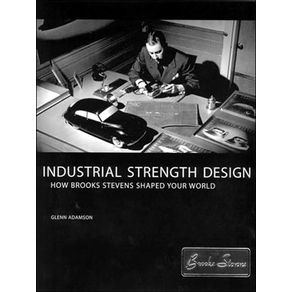Dismissing the "modernist snobs" of his era, Stevens (1911-1995) concentrated instead on what in style was salable, and more or less revolutionized American mid-century industrial design and packaging: the station wagon, the clothes dryer window, the wide-mouthed peanut-butter jar, the Oscar Mayer Wienermobile and the "Skylark" (or "boomerang") graphic for Formica are just a few of his or his eponymous firm's contributions. This book accompanies an exhibit at the Milwaukee Art Museum, but it isuncommonly (and fittingly) well designed and visually compelling itself. Along with the three other scholars who contribute essays, Chipstone Foundation curator Adamson has a good feel for the social and economic character of the '40s and '50s ("Stevens' Best Years," as one chapter heading puts it) and describes the designs clearly and with sympathy: "This logo was an ingenious creation in itself, in which the 3 and the m were the same shape but rotated ninety degrees from each other." Many pages are a period-evoking cyan rather than white, giving good contrast to the 250 photos and illustrations (40 in color). Anyone who lived in the United States between 1940 and 1975 will recognize the world of this book.



